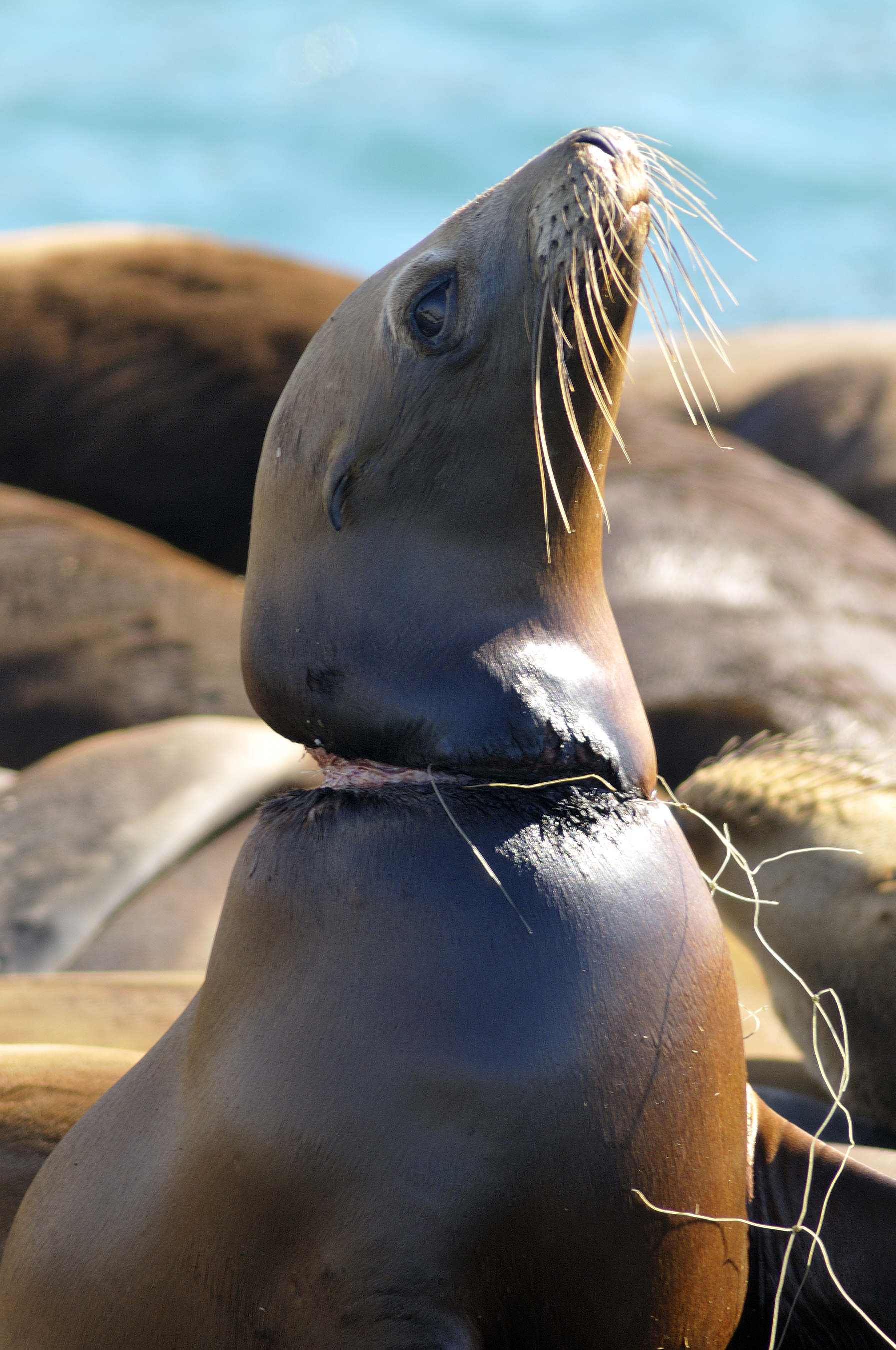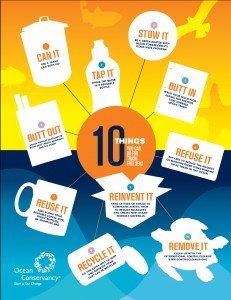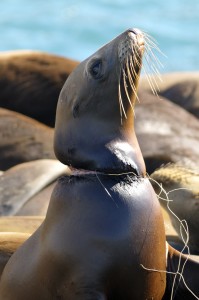
07 Sep EARTH MATTERS: TAKE ON THE TRASH
Editor’s Note: This is another installment of a weekly series by the team of scholars/dynamic enviro-activists Anna Zivian and Billy Mason. Both have deep ties to Telluride, but have flown the coop to make a difference in the larger world outside Shangri-La. They are.
72 barbecue grills. 64 umbrellas. 271 shopping carts. 155 toilet seats.
Not to mention over 940,000 pieces of food packaging, nearly 270,000 items of clothing, and more than 1.9 million cigarette butts.
All in all, over nine million pounds of trash.
That’s what nearly 600,000 volunteers from all across the globe found last year at Ocean Conservancy’s International Coastal Cleanup. Since the first Cleanup in 1986, over nine million volunteers have picked up over 153 million pounds of trash (more information about the Cleanup is available at http://www.oceanconservancy.org/our-work/marine-debris/2012-data-release.html).
“Ocean trash is human-generated, preventable, and one of the biggest threats to our oceans and waterways,” noted former Ocean Conservancy President and CEO Vikki Spruill this March, when the 2011 data was released.
This year’s Cleanup will take place next Saturday, September 15.
The International Coastal Cleanup is not limited to oceans, because trash travels, and cleaning up waterways everywhere helps keep trash from reaching the ocean. For example, there are seven Cleanups in Utah. You can check if there is a Cleanup near you by going to http://www.signuptocleanup.org.
If there isn’t one near you (for example, there are no Cleanups scheduled in Colorado), you can propose your own.
 One of the unique features of the International Coastal Cleanup is that Ocean Conservancy tracks what volunteers find by providing data cards to track the items found and collecting, analyzing, and disseminating the information. This can help drive solutions to the problem of marine debris.
One of the unique features of the International Coastal Cleanup is that Ocean Conservancy tracks what volunteers find by providing data cards to track the items found and collecting, analyzing, and disseminating the information. This can help drive solutions to the problem of marine debris.
Trash in the ocean can cause entanglements for marine birds, fish, and mammals, as well as for corals, sponges, and invertebrates. Turtles, birds, and fish can mistake human trash like balloons, plastic bags, and tiny pieces of plastic for food. Dirty beaches also have negative economic consequences, and marine debris can pose serious hazards for boats and ships. Plus stepping on cigarette butts at the beach is just gross.
So what can we do? Participating in a cleanup is a great first step, because it makes a difference directly and locally. But picking up trash is only a small part of the solution. We also need to work to reduce trash at the source by working with industry to find ways to generate less trash and to make it “too valuable to toss.” We can work for better policy to help reduce trash and improve recycling. Ocean Conservancy is also working to strengthen the science on the impacts of marine debris, working with the National Center for Ecological Analysis and Synthesis at UC-Santa Barbara to learn more about what the effects of marine debris are.
So come out next week and help clean up a local beach, waterway, or underwater site (if you are SCUBA-minded), and check out other ways to participate at http://www.oceanconservancy.org/our-work/marine-debris/trash-free-seas-icc-2012.html.
Photo credits: Entangled Sea lion, credit Jim Patterson. Plastic, 2011 International Coastal Cleanup, New Zealand, credit Camden Howitt



Sorry, the comment form is closed at this time.